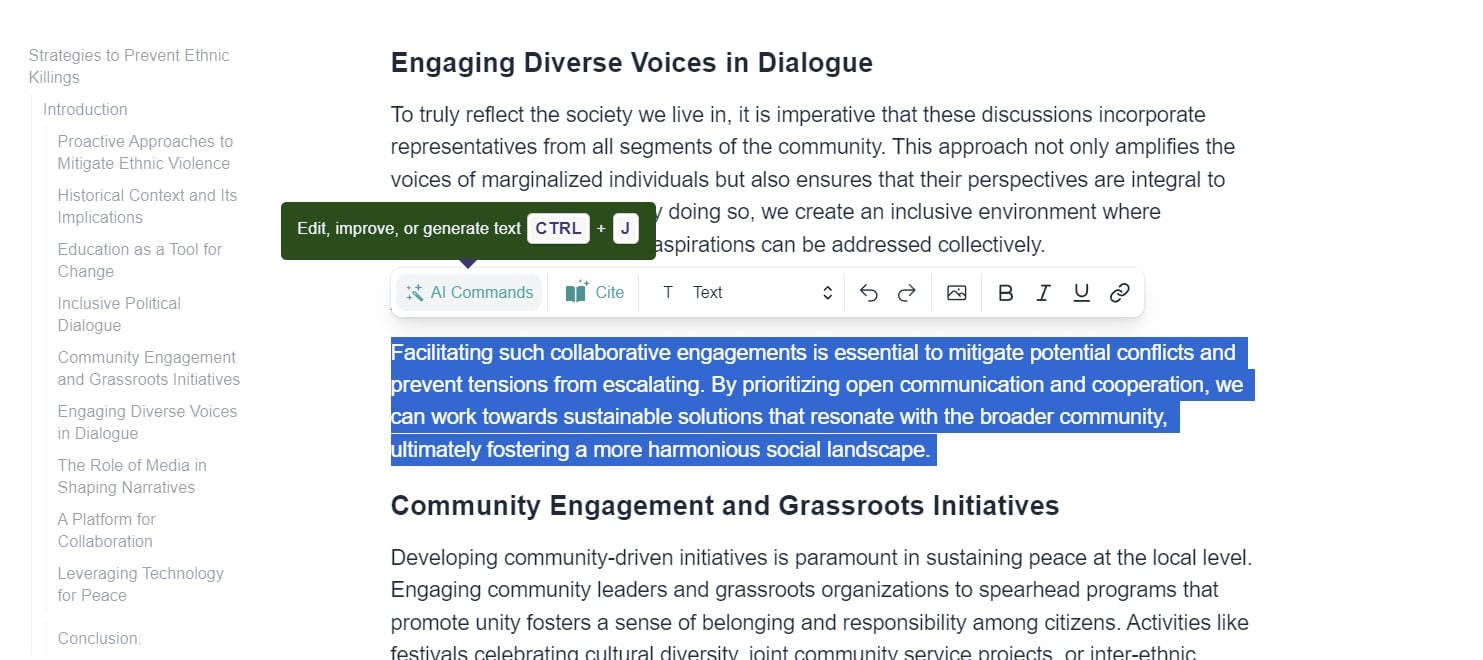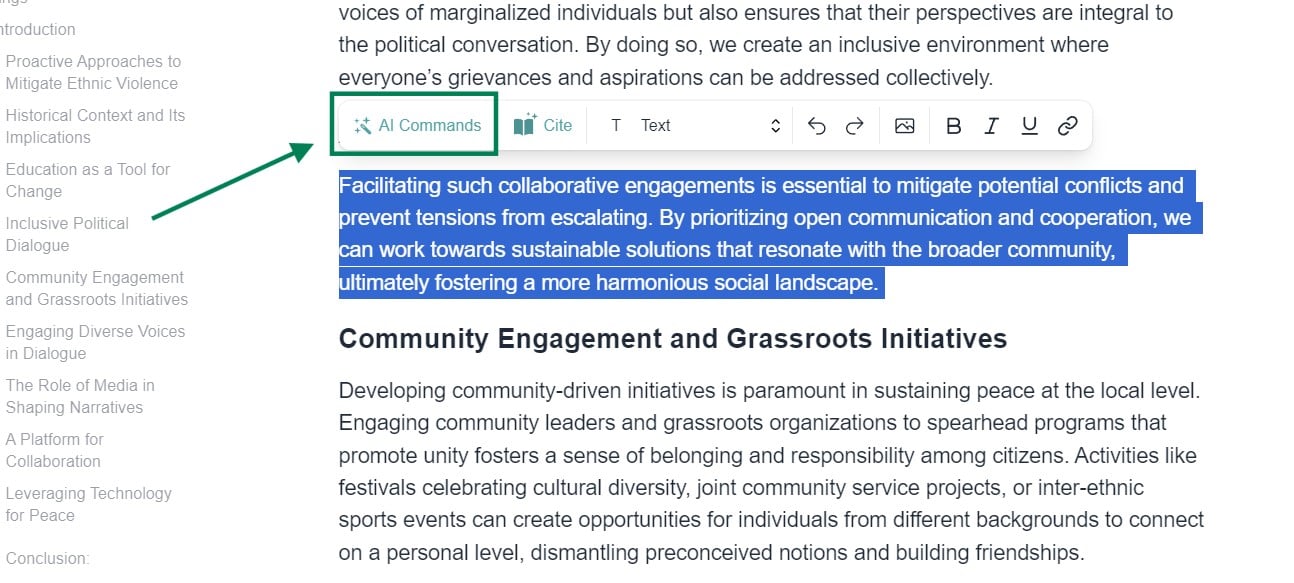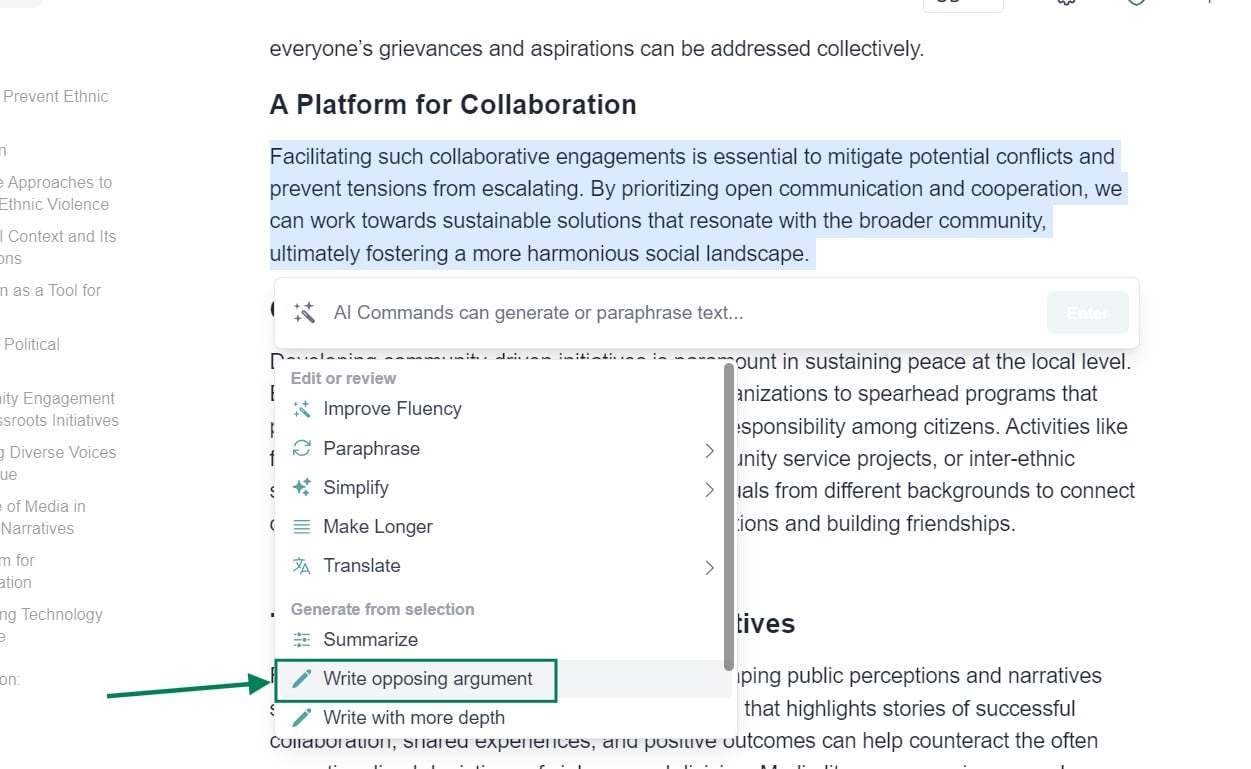When presenting an argument, acknowledging opposing viewpoints is crucial. A counterargument paragraph allows you to address these opposing views and strengthen your argument.
In this article, I’ll show you how to write a counterargument paragraph, including a counterargument paragraph example, to help you improve your writing skills.
Table of Contents
What is a counterargument?
A counterargument is a point or perspective that opposes your main argument or claim. It’s acknowledging the opposing side’s viewpoint, showing that you’ve considered alternative perspectives and are prepared to address them.
A counterargument is a way to anticipate and respond to potential criticisms or objections to your argument, making it more robust and convincing.
Consider it like a conversation: someone might disagree or raise a counterpoint when you present an argument. By addressing this counterpoint in your writing, you show that you know the opposing view and are willing to engage with it. This strengthens your argument and demonstrates your critical thinking skills.
Why include a counterargument?
Including a counterargument in your writing serves several purposes:
- Strengthens your argument: By addressing opposing viewpoints, you show that you’ve thoughtfully considered alternative perspectives and are prepared to respond to criticisms.
- Demonstrates critical thinking: A counterargument showcases your ability to think critically and engage with opposing ideas.
- Builds credibility: Acknowledging potential counterarguments makes your argument more convincing and credible, showing you’re aware of potential weaknesses.
- Anticipates objections: By addressing counterarguments, you can anticipate and respond to potential objections, making your argument more persuasive.
- Enhances persuasive power: A well-crafted counterargument can strengthen your argument by highlighting the weaknesses of opposing viewpoints.
By including a counterargument, you’re not weakening your argument, but rather, you’re making it more robust and convincing.
Components of a counterargument paragraph
A well-crafted counterargument paragraph typically consists of three key components:
- Acknowledgement of the counterargument: This is where you recognize the opposing viewpoint and show that you’ve considered it. This can be done by using phrases such as “Some people may argue that,” “Others may claim,” or “It’s possible to argue that.”
- Summary of the counterargument: In this section, you briefly summarise the opposing viewpoint. Be sure to present it accurately and fairly without distorting or misrepresenting the opposing view.
- Refutation of the counterargument: This is where you respond to the opposing viewpoint and show why it’s not valid or convincing. You can do this by providing evidence, pointing out logical fallacies, or highlighting the weaknesses of the opposing argument.
Where to address counterarguments
When it comes to addressing counterarguments, the placement of your counterargument paragraph can be just as important as its content.
Here are some options to consider:
- After the introduction: Addressing counterarguments early can help establish credibility and show that you’ve thoughtfully considered alternative perspectives.
- After a main point: If you’ve presented a key argument or point, consider addressing a counterargument immediately after. This can help reinforce your argument and show you’re prepared to respond to criticisms.
- In a separate section: If you have multiple counterarguments to address, consider dedicating a separate section to them. This can help keep your main arguments clear and focused.
- Throughout your argument: You can also address counterarguments throughout your argument as they arise. This can help create a sense of dialogue and show that you’re engaging with opposing viewpoints.
Ultimately, the key is to address counterarguments in a natural and organic way to your argument. Experiment with different placements to find what works best for your writing.
Counterargument paragraph example
Here’s an example of a counterargument paragraph:
“Some may argue that school uniforms restrict students’ freedom of expression and creativity. They claim uniforms are too rigid and don’t allow students to express individuality. However, this argument ignores that school uniforms can help reduce social conflicts and bullying based on clothing choices. By wearing the same uniform, students from different socioeconomic backgrounds are on an equal footing, and no one is singled out for wearing the ‘wrong’ clothes. Additionally, uniforms can help students focus on their studies rather than their wardrobe, leading to a more productive and respectful learning environment.”
In this example:
- The counterargument is acknowledged and summarized (“Some people may argue that school uniforms restrict students’ freedom of expression and creativity.”)
- The counterargument is refuted with evidence and logical reasoning (“However, this argument ignores the fact that school uniforms can help reduce social conflicts and bullying based on clothing choices.”)
- The refutation is supported with additional evidence and explanations (“By wearing the same uniform, students from different socioeconomic backgrounds are on an equal footing, and no one is singled out for wearing the ‘wrong’ clothes.”)
Streamlining Counterargument Writing with Blainy
Writing a counterargument can be challenging but crucial in creating a well-rounded essay or research paper.
Fortunately, Blainy’s innovative features can help simplify this process.
Introducing the “Write Opposing Argument” Feature
Blainy’s “Write Opposing Argument” feature is a game-changer for writers. You can generate a well-crafted opposing argument to strengthen your essay or research paper with just a few clicks.
How to Write an Opposing Argument with Blainy
Writing an opposing argument with Blainy is a breeze.
Here’s how:
- Select the text: Choose the section of your essay or research paper where you want to include an opposing argument.

- Press the AI command button: Activate Blainy’s AI-powered features by clicking the command button.

- Press “Write opposing argument” With a single click, Blainy will generate a well-structured opposing argument for you.

The Benefits of Using Blainy’s “Write Opposing Argument” Feature
By using Blainy’s “Write Opposing Argument” feature, you can:
- Save time and effort in researching and crafting an opposing argument
- Strengthen your essay or research paper with a well-reasoned counterargument
- Enhance your critical thinking skills by considering alternative perspectives
- Improve the overall quality and credibility of your writing
Ready to write opposing argument for your essay or article?
Sign up for Blainy today and start writing counterarguments with confidence!
FAQs
How do you start a counterargument paragraph example?
Starting a counterargument paragraph involves acknowledging and summarising the opposing viewpoint clearly and concisely. Begin by using transition words or phrases, such as “However,” “On the other hand,” or “Some people may argue that” to signal the introduction of the counterargument. Then, summarise the opposing viewpoint, representing it accurately and fairly.
Example: “However, some may argue that school uniforms restrict students’ freedom of expression and creativity.”
What is a counterclaim paragraph example?
Here is an example of a counterclaim paragraph:
“Some may argue that school uniforms restrict students’ freedom of expression and creativity. However, this argument ignores that school uniforms can help reduce social conflicts and bullying based on clothing choices.”
How to write an opposing argument easily?
Writing an opposing argument can be made easier by using tools like Blainy’s “Write Opposing Argument” feature. This feature lets you generate a well-structured opposing argument in just a few clicks. Select the text, press the AI command button, and “Write opposing argument.” Blainy will then provide a well-crafted opposing argument that you can use to strengthen your essay or research paper.







